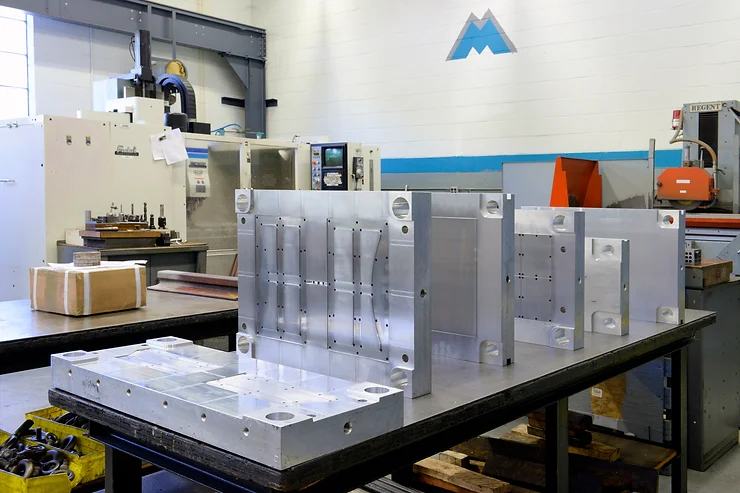By Brendan Wilson
Injection molds are typically made from either aluminum or steel. Deciding which one is right for you is one of the first decisions you’ll need to make when launching your project. In this blog, we’ll discuss the many variables that should be considered and also review positives and drawbacks of each option so that you can determine which approach is the right fit for your part.
Aluminum
Aluminum tool steel is lighter and more easily machined than its steel counterpart. Historically, it was used for prototype tooling to work out the kinks before moving on to a steel tool, but harder alloys of improved quality have enabled its used in production tooling under the right conditions.
The many benefits of aluminum tooling include:
-
Lower cost – Aluminum is softer, so it is quicker and easier to machine, bringing down the overall project cost. The tool shown the video above is being produced from aircraft grade 7075 aluminum and would take nearly twice as long to machine out of P20 steel.
-
Faster lead times – Because tools can be machined faster, the total build time can be days, or even weeks faster than steel tooling.
-
Better thermal conductivity – It is much easier to pull heat from aluminum than steel, so cycle times tend to be faster and post mold warp less.
However, there are downsides to choosing aluminum for your tool:
-
Shorter Longevity – Due to lower density and hardness, aluminum wears down faster than steel and is typically characterized by a shorter overall tool lifespan. It is common for tool makers to “guarantee” steel tools for 300,000 shots, but only 100,000 shots for aluminum tools.
-
Limited suitability – Not all thermoplastics can run in aluminum tooling. Corrosive plastics like glass filled polypropylene and gaseous plastics like acetal and nylon must be run in steel. Benign commodity resins like ABS, PS, PP, and PE are good candidates for aluminum, however.
Steel
As you might imagine, the pros and cons of steel tooling are the inverses of those shown above for aluminum.
Below are the benefits of choosing steel:
-
Longer longevity – Due to its hardness and density, steel tools, especially when “hardened” through the heat-treating process, can last much longer than those made from aluminum. If you expect your project to go beyond the 1,000,000-shot mark, consider steel for your tool.
-
Resin Suitability – Steel can easily handle corrosive or gaseous thermoplastics that would prove problematic for aluminum tooling.
But there are downsides to working with steel:
-
Higher cost – it is very time consuming to machine, drill, and polish steel, so overall tool costs tend to be higher than comparable tools made from aluminum.
-
Higher cycle times – Because it is difficult to remove heat from the mold, cycle times can be higher, leading to higher per unit costs.
There are many other considerations that must be discussed with your technical sales representative, including the complexity of your part, the gating style preferred, and the number of cavities desired.
Our experienced technical staff at Montrose Molders would be happy to provide guidance on which option is best for you and your project.


